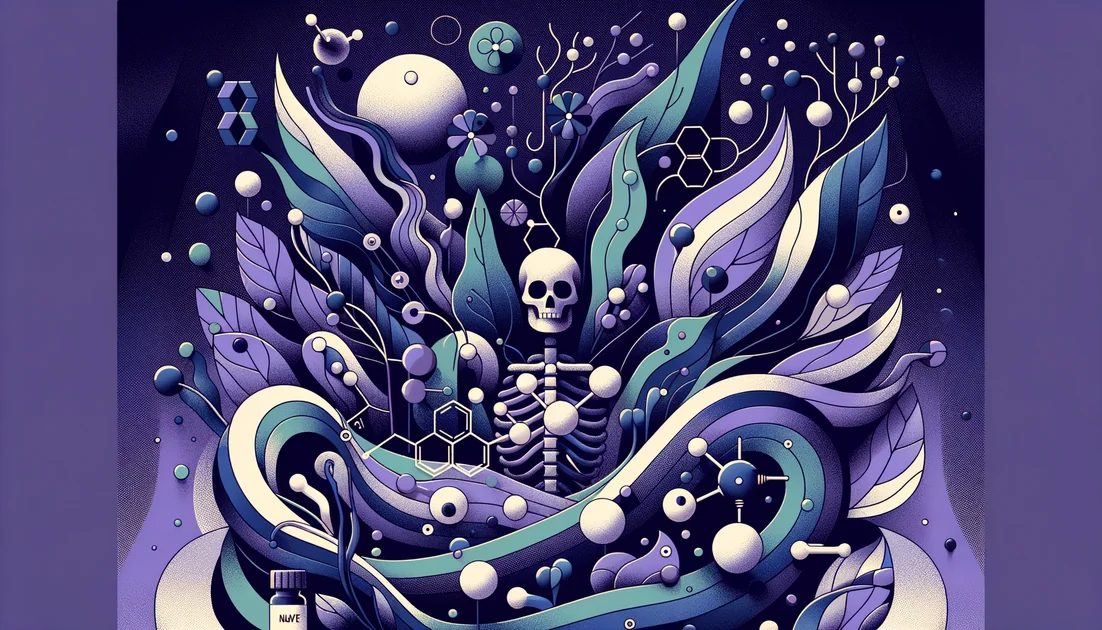
Collagen Peptides vs Bone Broth
For targeted, measurable support (especially joints) choose collagen peptides. Pick bone broth for a warm, savory, light-protein drink—just don't count on it for clinically studied collagen doses. [1][2][3]
Bottom line: Hydrolyzed collagen peptides win for standardized dosing, bioavailability, and evidence—particularly for knee osteoarthritis symptoms—at typical 5–10 g/day intakes. Bone broth is a nourishing beverage with variable protein/collagen and higher sodium; it's pleasant and useful in cooking or hydration but unreliable for hitting effective collagen peptide doses seen in trials. If you love broth, enjoy it—just use collagen peptides when you want predictable, research-aligned dosing. [1][2][4][5]
The Comparison
Standardization: Type I/III most common; hydrolyzed to ~2–5 kDa peptides; sometimes labeled "low-molecular-weight collagen peptides."
Dosage: 2.5–15 g/day in trials; 5–10 g/day common; 3 g/day used in some LMCP RCTs
Benefits
- •Consistent collagen amino acid delivery
- •Human RCT and meta-analytic signals for joint symptoms
- •Some evidence (mixed) for skin hydration/elasticity
- •Low sodium, easy to dose
Drawbacks
- •Not a complete protein; minimal tryptophan/leucine
- •Quality varies by brand; cost adds up
- •Skin outcomes less convincing in higher-quality, unfunded trials
Safety:Generally well tolerated in RCTs; avoid if allergic to source (bovine, porcine, fish). Not a sole protein source; pair with complete proteins.
Standardization: No standard assay; composition varies by bones, simmer time, acidity, brand; protein often 6–10 g/cup; collagen 1–6 g/cup typical in tests
Dosage: Common intake 1 cup (240 mL) provides ~6–10 g protein; collagen content unpredictable
Benefits
- •Comforting savory hydration with electrolytes
- •Light protein source; culinary versatility
- •May fit gelatin + vitamin C pre-rehab protocol if dose is sufficient
Drawbacks
- •Highly variable collagen content; often below doses used in trials
- •Can be high in sodium; quality varies
- •Limited direct RCT evidence for skin/joints vs placebo
Safety:Sodium can be high in packaged products; allergies to ingredients possible. Heavy metals generally low, but sourcing and recipe matter.
Head-to-Head Analysis
Efficacy for joint pain/function Critical
Winner:Collagen Peptides (Hydrolyzed)• Importance: high
Efficacy for skin (hydration/elasticity/wrinkles)
Winner:Collagen Peptides (Hydrolyzed)• Importance: medium
Bioavailability and standardization Critical
Winner:Collagen Peptides (Hydrolyzed)• Importance: high
Dose reliability vs food variability Critical
Winner:Collagen Peptides (Hydrolyzed)• Importance: high
Analyses show bone broth amino acids/collagen are highly variable and often below amounts delivered by 10–20 g collagen supplements. [7]
Cost/value per effective dose
Winner:Collagen Peptides (Hydrolyzed)• Importance: medium
Side effects/tolerability
Winner:Tie• Importance: medium
Sodium and dietary constraints Critical
Winner:Collagen Peptides (Hydrolyzed)• Importance: high
Stacking/rehab protocols
Winner:Collagen Peptides (Hydrolyzed)• Importance: medium
For tendon/ligament loading, evidence uses 15 g gelatin + vitamin C ~1 h pre-exercise; easiest to match with measured collagen/gelatin powders. Typical broth servings may under-dose. [15]
Common Questions
Is bone broth a good substitute for collagen supplements?
It's fine as food, but collagen content varies widely and is usually below the consistent, labeled doses used in collagen trials. [7]
How much collagen should I take daily?
Most studies use 2.5–15 g/day (goal-dependent). For joints, 5–10 g/day for 3–6 months is typical before reassessment. [8]
Can bone broth help with hydration?
Yes—broth provides fluid and electrolytes, but watch sodium, which often ranges ~240–450 mg per cup. [12][14]
Do I need vitamin C with collagen?
For general use it's optional; for pre-rehab protocols, pairing ≈15 g gelatin/collagen with ~50–100 mg vitamin C about 1 hour before loading is reasonable. [15]
Which Should You Choose?
Knee osteoarthritis or activity-related joint discomfort
Choose:Collagen Peptides (Hydrolyzed)
Meta-analyses show small-to-moderate pain/function benefits with oral collagen peptides taken daily for 3–6 months. [1]
Skin hydration/elasticity goals
Savory hydration/comfort or light protein with meals
Low-sodium diet or hypertension
Pre-rehab tendon/ligament sessions
Choose:Collagen Peptides (Hydrolyzed)
Match the studied protocol (≈15 g gelatin/collagen + vitamin C 50–100 mg, ~60 min before loading). Broth rarely provides 15 g gelatin in one cup. [15]
You might also like
Explore more of our evidence-led investigations, comparisons, and guides across every article style.

Thorne
The Paradox: Sports-trusted testing, guarded transparency—and a recent certification misstep

TMG (betaine anhydrous; trimethylglycine) vs Betaine HCl (betaine hydrochloride)
Pick TMG if your goal is methylation/homocysteine support; pick Betaine HCl only for short-term gastric acid support (e.g., with pH-dependent drugs) and ideally under clinician guidance. [3][1][2][10][11]


Boron
A mineral that helped preserve Egyptian mummies also sits at the heart of a modern cancer drug—and may nudge your bones, vitamin D, and inflammation in subtle ways.


Tocotrienols
The stealthier cousins of vitamin E—built with springy tails that move differently in cell membranes and behave differently in your body.




